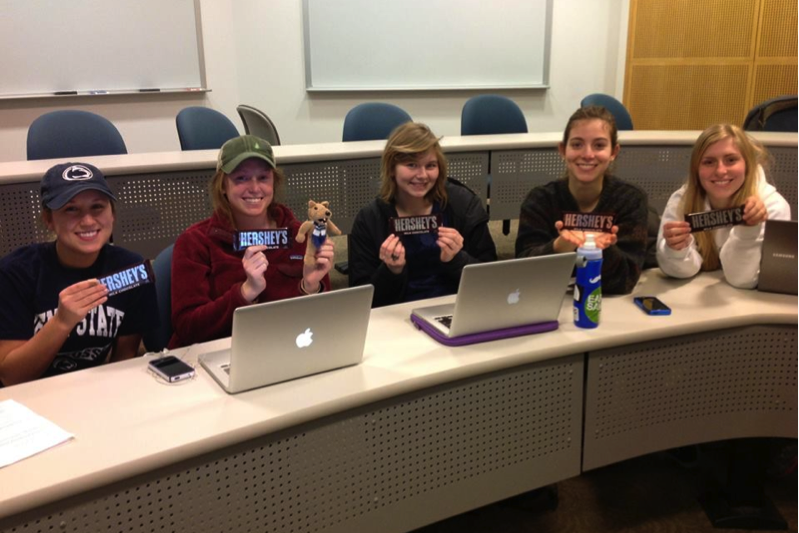Posted: November 16, 2014
Once we arrived in Costa Rica, our first stop was at EARTH University in Limon.

Preparing for Costa Rica
This spring break I had the opportunity to travel to Costa Rica with the ERM 499 class at Penn State. We spent a week traveling the beautiful country, along with a longer stay at their world-famous EARTH University.
The purpose of this class was to compare different sectors and practices of agriculture between Pennsylvania and Costa Rica. In preparation, we were broken up into three different groups in our class: Eco Tourism, Natural Resources and Waste Management. Before we traveled to Costa Rica, we visited three different locations in Pennsylvania to study each of the group's topics, including: Bald Eagle "Green" Hotel and State Park, Black Moshannon State Park and Schrack Farms in Loganton, PA (to tour their biodigester facilities). This gave us a background of the agriculture we would be comparing while in Costa Rica.
Once we arrived in Costa Rica, our first stop was at EARTH University in Limon. We were here for several days, learning about different types of agriculture. These included:
Urban gardening. At EARTH, students in their second year must come up with a business project. The university loans them money, and the must make enough profit to pay back the loan. While visiting, we took part in a tour business project that was designed to teach people living in urban areas of Costa Rica how to garden without soil. The first was with a substrate mixture made up of leftover rice stock, coconut shreds and charcoal, and we had to add the appropriate amount of water and nutrients. Next was hydroponics (growing plants in just water and added nutrients) and aquaponics (growing plants in water where there are fish producing waste that acts as a fertilizer). This was one of my favorite parts of the trip and I am planning to try some of the gardening technique here in PA.
Biodigesters. While at EARTH, we toured their pig and dairy facilities, and the biodigester where their waste was disposed and utilized. The electricity created by the methane and carbon dioxide gases was used to run the milking units, heat lamps to keep newborn piglets warm at night. We then took this information we learned and helped a small farmer in the hills build his own bio digester. I come from a family farm that has a bio digester supported by 1000+ cows. This was a very humbling experience to help a farmer trying to utilize enough waste to run his gas stove 3x a day.
Eco Tourism. One day, a classmate and I were dropped off at a home in a small village and were told "Have fun, you'll be picked up at 4:30." Not knowing what to expect, we went up to the house where we were greeted by Ana Marie and her family. However, they did not speak any English and my Spanish is very basic. But by the end of the day, I was able to communicate well with the family. Ana Marie owned 1 of 7 farms that were a part of an agri-tourism attraction that people from all over the world came to visit. She had small plots of nearly 20 different crops that show cased the main things grown in Costa Rica. My personal favorite was star fruit, which we had to hit out of trees with sticks to harvest.
Banana Plantations. EARTH has its own banana plantation, where the crops are produced with minimal pesticides and then shipped to Whole Food stores here in the U.S.A. We saw the process from start to finish. One fun fact we learned is that there are 3 plants together. One is the "grandmother" which provides nutrients to the "mother" who is the main plant. The "mother" then becomes a "grandmother" when a "daughter" plant is full grown and producing.
Solar panels. Students in their last year must choose something that they put all of their focus into. Many choose projects that they can take back to their home country. The students we worked with were going around to communities and helping those without sufficient amounts of electricity set up small solar panel systems. It was very interesting to see how much research and time goes into setting up solar panels.
Other activities included: hiking, visiting national parks and beaches, zip lining, white water rafting and lots of playing soccer (or as they say, futbol). It was an incredible experience that was made possible with your scholarship. I cannot thank you enough, and I hope you have the opportunity to visit the beautiful hills of Costa Rica!
Ag Sciences Global
Address
106 Agricultural Administration BuildingUniversity Park, PA 16802
- Email globalag@psu.edu
- Office 814-863-0249
- Fax 814-865-3055
Ag Sciences Global
Address
106 Agricultural Administration BuildingUniversity Park, PA 16802
- Email globalag@psu.edu
- Office 814-863-0249
- Fax 814-865-3055

